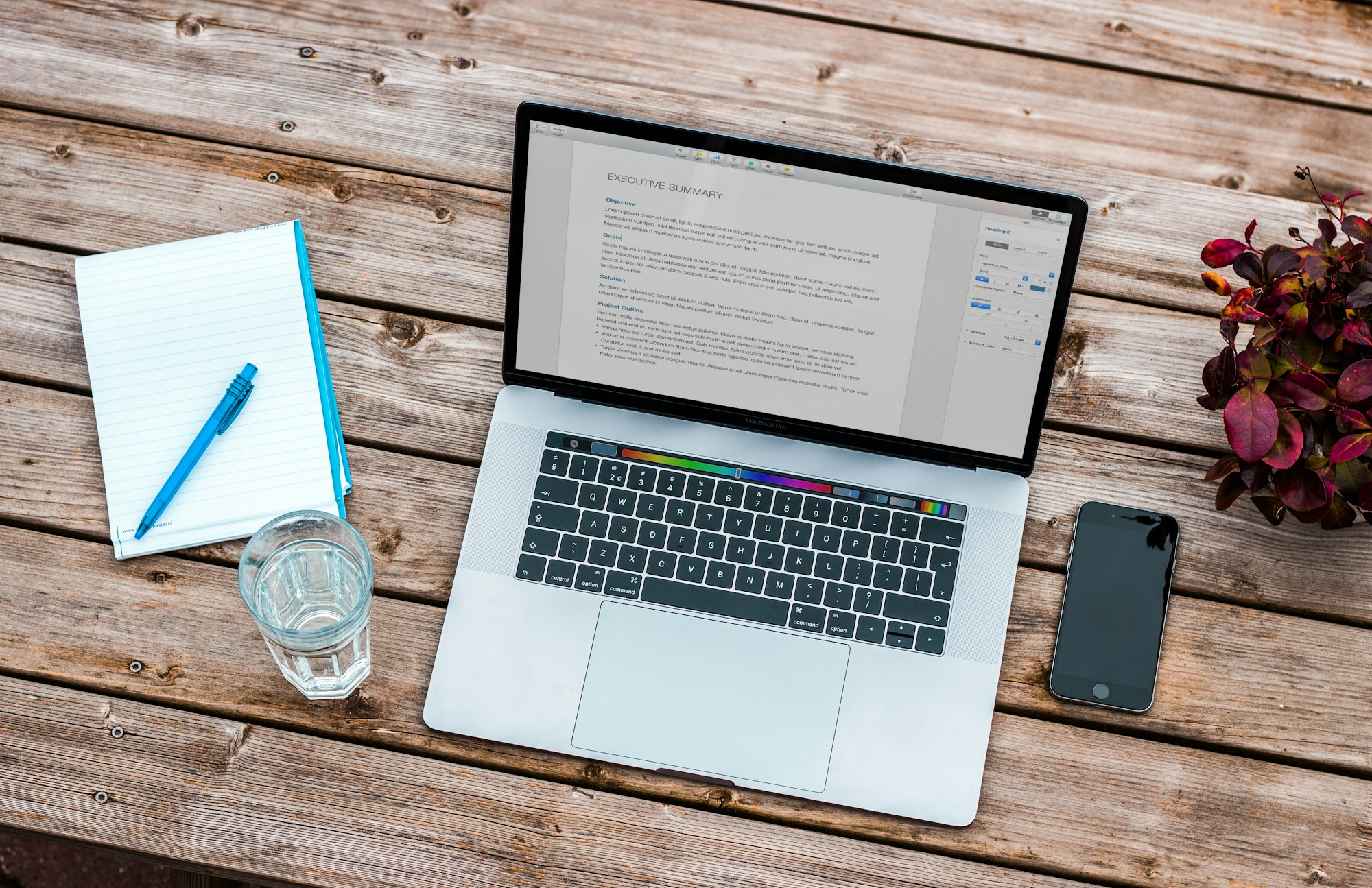Applying for jobs as a student or recent grad can be intimidating. It's hard to imagine going up against other candidates who have more work experience and coming out the other side with a job offer.
Fortunately, there are a number of ways to make you a strong, competitive candidate and ensure your application stands out. The experiences you have from classes, projects, internships, and volunteer positions are important, and can be just as impressive and persuasive as paid work.
Even so, it’s still up to you to write a great resume and show your future employer how awesome you are. Here are the steps to do so, which we'll dive into in more detail below:
- Tailor your classwork, projects, and educational experiences directly to the job description
- Highlight your education by putting that section first on your resume
- Include any relevant volunteer, internship, or other non-paid work experience in your Work section
- Use a professional resume template and follow best practices
- Get feedback from advisors and people in the industry
Even with these instructions you should still follow general resume writing best practices. You can learn all about those in How to write a great resume that gets past automated systems and gets you hired.
Getting past automated systems
The first thing any job seeker needs to do regardless of their background is get past the applicant tracking systems (ATS) that businesses use to screen resumes before a human ever sees them.
This is the first place you’ll be able to get a leg up. If you understand how these automated systems work, you’ll be able to get past their screening techniques and onto a recruiter’s desk. When you do, you'll already be in the top 30% of applicants and in good shape to impress the hiring manager.
At their most basic, ATS will take keywords from a recruiter or job description and check to see if your resume and cover letter use those terms. More advanced versions will compare the language in the job description to your resume more generally, picking out similar words and phrases that aren’t necessarily exact matches.
Step 1 below is therefore the most important – it’s the primary thing that will get you past these automated systems, regardless of how much work history you have. Let’s dive in to understand how to get past these automated systems and get hired with an awesome education-first resume.
Writing your best resume

1. Tailor your classwork, projects, and educational experiences directly to the job description
I cannot stress how important this step of the process is.
This is the best way to get past automated systems and onto a recruiter’s desk. The best part? It's not magic how those ATS work, so you’ll be past them in no time if you follow the instructions below.
First, read over the job description for the position to which you’re applying, and pick out the words and phrases that seem most important. Here are some likely places to look:
- The job title
- The list of responsibilities and job duties
- The qualifications
- The beginnings of paragraphs
- Names of specific technologies or techniques that are required
Once you’ve found a list of the most important words, try to use them as much as possible throughout your resume. Make absolutely sure to include them in both your Education and Work sections.
If you’ve had classes or done projects that incorporate any of those words and phrases make sure to include them as close to the top of your resume as possible.
You can repeat the words and phrases a number of times, but if it’s starting to sound repetitive feel free to work in some synonyms or similar phrases. It's likely that the recruiter will use synonyms in their ATS, and the best automated systems already know to look for them. Most importantly, your resume will flow better when a human reads it.
Ideally, use a program or website online that helps tailor the language of your resume to the language in the job description. These services can help you find ways to improve your resume beyond what might be most obvious.
Example (bold used to highlight important keywords)
Job description:
Savviest is looking for an entry level graphic designer. The candidate should be comfortable with Illustrator, Photoshop, or Sketch, and be able to show their previous work. This could include logos, user interface designs, geometric-based artwork, or similar.
Resume accomplishments:
* Took multiple upper-division classes in graphic design and digital art.
* Proficient with Illustrator and Photoshop, and some experience with Sketch.
* Designed and illustrated winning logo for college library competition.
2. Highlight your education by putting that section first on your resume
Have you spent more time in school than on the job? Not a problem at all! Employers are used to, and even excited by, the opportunity to hire students and recent grads so there’s no reason to downplay your education.

Start your resume with an Education section that lists your last one or two schools or programs (with the most recent one first). Include line item descriptions of the work you did there just as you would for a job.
When listing your accomplishments, it's helpful to ask yourself some questions to make sure you include everything that will make you great for this particular role.
Some examples include:
- What are big projects you’re proud of that will show how well you will do in this job?
- What classes did you take that are relevant to this role?
- What awards or honors did you receive while at this school or in this program?
- How else did you stand out?
Examples: These student templates from UVA.
3. Include any relevant volunteer, internship, or other non-paid work experience in your Work section
After your Education section you should still include one for Work. Even if everything in that section was unpaid, such as internships or volunteer positions, that will still be considered as work by any good employer.
You should indicate if a position was as an intern or volunteer in the job title or description, but beyond that treat it with the same respect as any other part of your resume. This includes:
- Adding accomplishments statements under each position highlighting your responsibilities and successes.
- Matching the language in each accomplishment statement with the keywords you found in Step 1.
- Demonstrating your impact in that role using specific examples of your work.
- Placing the most relevant work at the top.
- Trying to have at least 3 accomplishment statements per position, but don’t go much over 5 or 6.
Also, make sure to use hard numbers wherever you can. Recruiters love seeing exactly how you made a difference in your previous positions. How many people did you work with? How much money did you handle in a shift? How much money did your project save the organization? What specific impact did your project have?
Example: This student template from UMD that highlights both education and internship experiences.
4. Use a professional resume template and follow best practices
As a student or recent graduate you should make sure to come off as professional. This means that how your resume looks is very important, so make sure to use templates that were designed by industry insiders or other pros.
You can find these templates in online resume builders, Microsoft Word, Google Docs, and from your school’s Career Center. Opt for more traditional, professional looking templates over creative ones. It’s the content of your resume that will catch hiring manager’s eyes, not the colors and format.

An added bonus of using templates from trusted sources is that they’ll ensure you get the best results from automated systems. You don’t want to limit your chances by turning in a resume that the ATS can’t read!
Example: The Sleek template in Savviest, with the Student format enabled.
5. Get feedback from advisors and people in the industry
The last thing you should do is also one of the most important. If you haven’t been writing resumes your whole life, talk to someone who has! Your school’s Career Center is always happy to help, even if you’ve already graduated.
Teachers, parents, or other advisors are also good resources. Try to find ones who have worked in the industry into which you’re applying. They may even be able to introduce you to someone in the field who can help make your resume and application even stronger.
How to make this process even easier
Following the instructions above (and making sure you hit the points outlined here for resumes in general) will give your application a major leg up. Once you get the hang of it, writing a new resume for each job isn’t hard.
However, if you want to make sure that each resume you write is up to the highest standards, or if you want the ability to build out new resumes with a single click each time you need one, check out How Savviest helps you write amazing resumes and advance your career.
Savviest helps you write the best possible resumes quickly and easily. It will build a custom resume for you based on a job description to ensure that you always have a custom tailored resume each time you apply.
If you use Savviest, be sure to choose the Student format when writing your resumes to prioritize your education and show your relevant coursework.

If you have any questions or want to talk over writing great resumes, finding jobs, and your career, feel free to get in touch with us. Even if you don’t use Savviest at all, we’re always happy to chat ?
Good luck! You're going to do great.

